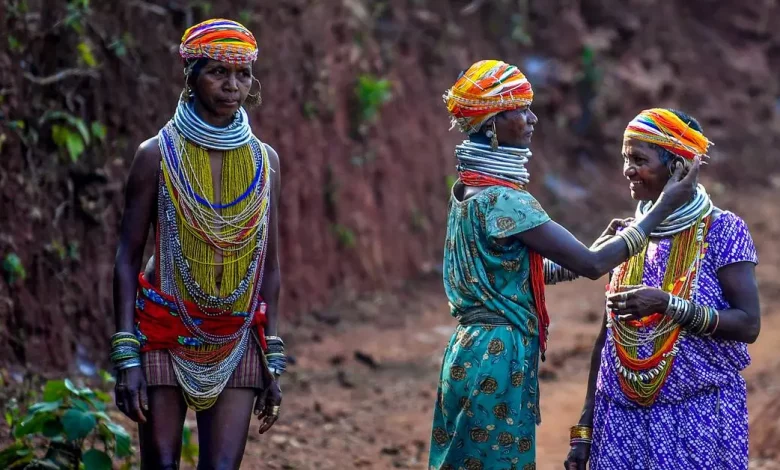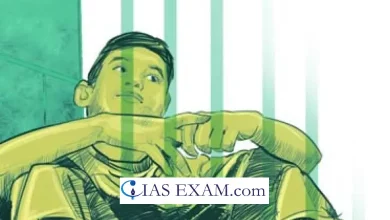Daily Current Affairs for UPSC
Particularly Vulnerable Tribal Groups(PVTGs)
Syllabus- Governance [GS Paper-2]

Context- The Ministry of Tribal Affairs recently told the Rajya Sabha that the population of the Particularly Vulnerable Tribal Groups (PVTGs) is not decreasing.
Who are Particularly Vulnerable Tribal Groups (PVTGs)?
- The PVTGs are the most marginalized and extreme backward sections among the Scheduled Tribes (ST).
- The criteria for identifying particularly vulnerable tribal groups are as follows:
- Pre-agricultural technology level,
- Low literacy,
- Economic backwardness,
- Population decline or stagnation.
- History of PVTG: The Dhebar Commission (1960-61) observed that there was inequality in terms of socio-economic development among the tribal communities.
- In 1975, based on the Dhebar Commission report, the government defined Primitive Tribal Groups (PTGs) as a separate category and listed 52 tribal groups as PTGs.
- Later, in 1993, more tribal groups were added to the list. According to the 2001 census, there are 75 Highly Vulnerable Tribal Groups (PVTG) with a total population of 27,68,322 in 18 states and union territories.
- In 2006, PTGs were renamed as Particularly Vulnerable Tribal Groups (PVTGs).
Current status:
- In six states, Madhya Pradesh, Chhattisgarh, Maharashtra, Jharkhand, Andhra Pradesh and Tamil Nadu, PVTGs constitute more than 77 percent of their total population and cover 38 out of 75 PVTGs.
- Among the 75 PVTGs listed, Odisha has the highest number, followed by Andhra Pradesh (12), Bihar and Jharkhand (9), Madhya Pradesh and Chhattisgarh (7), Tamil Nadu (6) and Kerala and Gujarat (5 each ).
- The Saharan tribe of Madhya Pradesh and Rajasthan is the largest PVTG with a population of over 4 lakhs.
Recent Government Initiatives
- PM-PVTG Development Mission Programme: This is an allocation of Rs 15,000 crore for tribals in the Union Budget 2023-24. The program aims to connect all 22,544 PVTG villages to basic government services such as communication, electricity, public education, health, water supply and connectivity.
- Pradhan Mantri-Janjati Adivasi Nyaya Maha Abhiyan: The government recently sanctioned ₹ 24,000 crore for the Pradhan Mantri-Janjati Adivasi Nyaya Maha Abhiyan.
- Through nine ministries, it focuses on 11 critical interventions such as provision of pucca houses, roads, water conduit network, community water supply, mobile medical units with medical expenses, etc.
- There are also plans to set up vocational and craft training centers in 60 aspirational PVTG blocks and build 500 Van Dhan Vikas Kendras to help people trade forest products.
Challenges
- Lack of up-to-date information: The Tribal Ministry has not yet compiled accurate and up-to-date data on PVTG populations. Since 1951, the Census has not separately counted PVTGs and provided data on their socioeconomic indices to the House panel.
- Diverse groups: All 75 PVTGs are small in number, culturally diverse and live in remote environments with poor governance and infrastructure, making it difficult to develop coherent policies.
- Loss of their traditional habitats: IDPs are increasingly threatened by loss of their traditional habitats and livelihoods, leading to starvation/famine, malnutrition and poor health.
- On the Verge of Extinction: Some of them are even on the verge of extinction, including Shompens, Jarawas, Sentinels of Andaman and Nicobar Islands; Bonds from Orissa; Choianaickans from Kerala, Abujhmaris from Chhattisgarh; and Birhors of Jharkhand.
- Most Vulnerable Groups: Government of India reports show that most of these groups have not made significant social and economic progress and have become the “Most Vulnerable Groups” that require special attention.
Actions/proposals
- In 2013, a National Advisory Council (NAC) report on the situation of PVTG recommended that the Ministry of Tribal Affairs plan and conduct a census specifically for PVTG communities.
- It should not only list but also find out the state of education, health and housing.
- Habitat rights: Protection of their land and natural resources is central to the dignified survival of all tribal peoples because it ensures their livelihood. Therefore, the rights of PVTGs to their land and habitat must be recognized and respected.
- Bottom-up approach: It is important for PVTGs to be able to define and control the nature of their desired development and to be active participants in government initiatives rather than passive recipients.
- Strong engagement: The gap between policy and performance remains wide, so strong engagement is needed to bring public space to the most marginalized people.
Way Ahead
- PVTGs are one of the most vulnerable regions of the country. Therefore, steps must be taken to empower such tribal groups.
- However, it must be remembered that taking such measures will not disturb the autonomy of the tribes and will take positive steps keeping in mind their uniqueness.
Source: The Hindu
Practice question:
Q. PM-PVTG Development Mission Programme. Comment.





.png)



